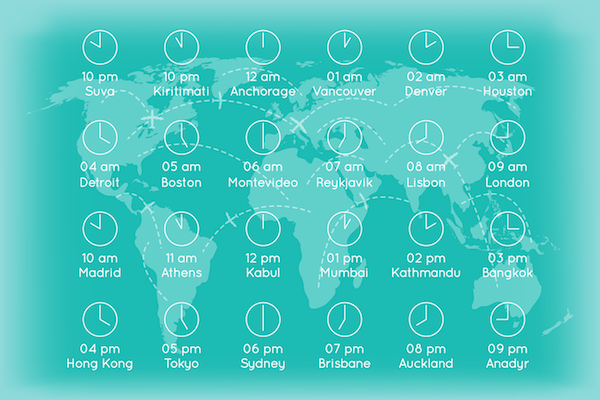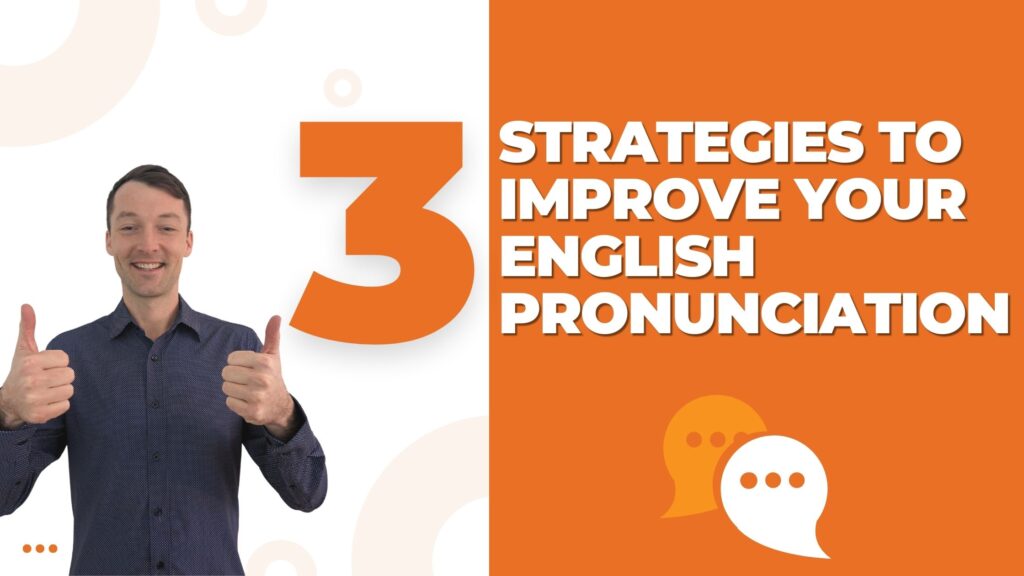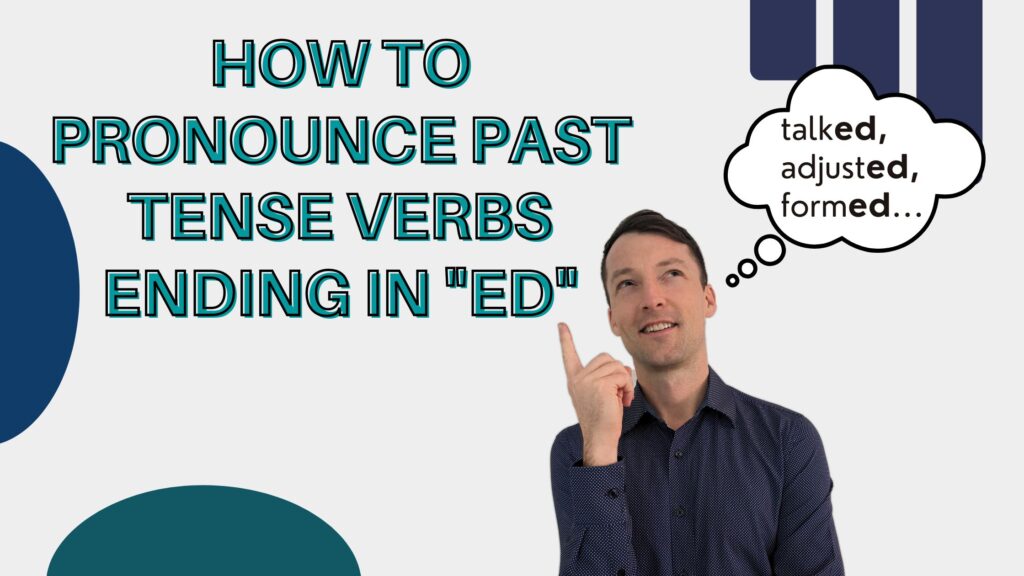Prepositions can sometimes be confusing for students learning English. They do not translate exactly from language to language. Sometimes one preposition is correct in one language, but a different one is correct in another language. In this posting I talk about three important English prepositions, at, in, and on. Both can be used to express time and location. I give you the rules for using these prepositions correctly. I also give you example sentences.Finally, I give you some common English expressions that use these prepositions. The download at the end will give you a longer list of expressions using the prepositions at, in, and on.
Here is the video lesson on using At, In & On in English:
Subscribe to our YouTube Channel to see all of our lessons and get the latest videos right away!
Using the prepositions at, in, and on to express time.
We can express time using the prepositions at, in and on.
We use at to discuss exact times, sometimes as shown on the clock.
The preposition in is used to talk about hours, minutes, days months, years, centuries, and long period of time.
We use on when we discuss specific days and dates.
Using the preposition at to express precise times.
The following sentences show the preposition at for precise times.
- I always watch the news at 10:00 pm.

- I turn off my phone at bedtime.
- We got home from work at sunset.

- At the moment, he is working at Macy’s.

- I’ll meet you at the restaurant at noon.

Using the preposition in to discuss other types of times.
The following sentences shows the preposition in talking about minutes, hours, days, months, years, and longer periods of time.
- My brother called me to tell me he’ll be home in 20 minutes.

- Dinner will be ready in two hours.

- The package I ordered should be here in 3 days.

- Her birthday is in September.

- Columbus discovered America in 1492.

- The telephone was invented in the late 1800’s.

- In the summer, it is very hot.

Using the preposition on for days of the week and precise dates.
The preposition on is used in the following sentences to show exact days or dates.
- We go to church on Sunday.

- My father’s birthday is on July 8.

- We open our presents on Christmas morning.

- My dental appointment is on July 31.

Using the prepositions at, in, and on to show location
We can use the same prepositions, at, in, and on to show location.
We use at to express location in a general situation when you are talking about a known location.
Use the preposition in, also to show location in a general situation. When this happens, the expression often has the same meaning as with the preposition at. For this reason, sometimes (not always) in, and at can be used interchangeably to show location. However, we also use in to show location in a building or an enclosed space. Finally, we use in when talking about cars, trucks, buses, trains or boats.
The preposition on is used to show location in an open space. It is also used for talking about planes, boats, trains, and bicycles. Occasionally it can be used interchangeably with in when talking about transportation.
Using the preposition at to discuss a general situation at a known location.
The following sentences show the use of the preposition at for location in general situations.
- My kids are at school right now.
 Note, we can also say, “My kids are in school right now.”
Note, we can also say, “My kids are in school right now.” - I need to be at work early tomorrow.

- My sister isn’t at home today.

- I met an old friend at the supermarket today.

- He works at Burger King..

Using the preposition in for a general situation, and enclosed space, or certain types of transportation
The following example sentences show the preposition in used in the ways described above.
- My kids are in school right now.
 (At would also be correct here.)
(At would also be correct here.) - The robber is now in jail.

- My mother is in the hospital.
 (At would be correct is she is just visiting or not staying overnight.)
(At would be correct is she is just visiting or not staying overnight.) - We had a meeting in my boss’ office.
 (an enclosed space)
(an enclosed space) - We saw a movie in the new theater.
 (a building)
(a building) - They swam in the pool.
 (again, and enclosed space)
(again, and enclosed space) - Everyone, get in the car right now!

- My son got to ride in a fire truck.

- All the students got in the bus.
 (On would also be correct here.)
(On would also be correct here.)
Using the Preposition on talk about open spaces and transportation.
We can use the preposition on as shown in the following sentences.
- The kids were on the playground.
 (an open space)
(an open space) - I was very excited when the Broncos walked on the playing field.
 (again, an open space)
(again, an open space) - We were on the plane for two hours when we flew to California.
 (In could also be correct.)
(In could also be correct.) - Get on the Number 8 bus, and stay on it for 6 stops.

- They are on a cruise on a luxury boat.

Using the prepositions at, in, and on with some common expressions.
The following is a short list of expressions using the prepositions at, in, and on. Some may express time and location. Others may not. I give you the definitions and an example sentence. The download will contain a much longer list.
- at first–in the beginning. At first, you should pay your bills. Then you can spend money for fun.

- at any rate–whatever happens. I’ve very busy, but at any rate, I’ll be at your party tomorrow.

- at last–finally. I’ve finished my homework at last!
- in charge–the boss. When my boss is on vacation, his assistant is in charge.

- in fact–really. I’ve never been to Europe. In fact, I’ve never left the USA.

- in debt–owing money. I borrowed money to buy my house, so now I’m in debt.

- on fire–fire is coming out of something. Help! My house is on fire.

- on the air–on television or on the radio. My favorite show is on the air right now.

- on hand–to have something. Do you have any coffee on hand?

You now know many uses for the prepositions at, in, and on. These prepositions can be used to talk about both time and location. We also use them in many idiomatic expressions:
- We use at for precise times when we talk about time.
- Use at for general situations when we talk about locations.
- In is used for less precise times (months, years, etc.) when we talk about time.
- When we talk about location, we use in for general situations, enclosed spaces, buildings, and some types of transportation.
- On is used for specific days and dates when discussing time.
- When discussing location, use on for open spaces and certain types of transportation.
The download will give many common examples of these three prepositions used in idiomatic expressions.
Idioms of the day
- at the end of the day–This means in conclusion. People have many different interests and personalities, but at the end of the day, most of us want the same things.
- in the long run–This means eventually or at the end. In the long run, the richest people are not always the happiest people. Note, in the long run often has the same meaning as at the end of the day.
- on a shoestring–This means you are on a very tight budget. I have very little money, so I’m running my household on a shoestring.





